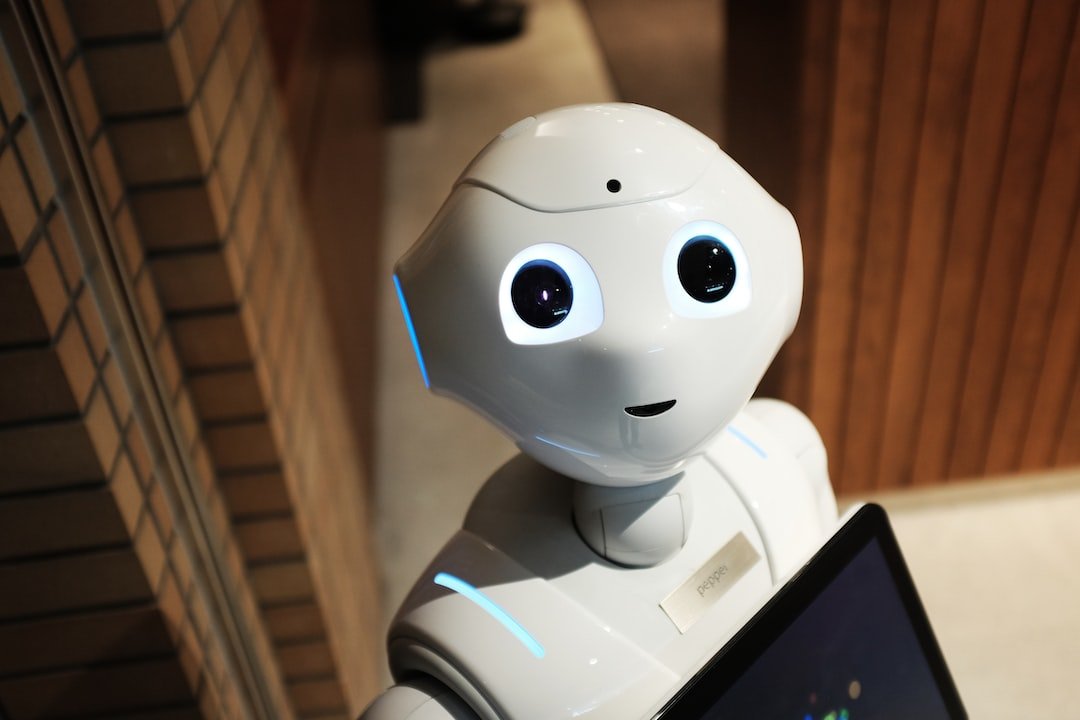Mechatronics is a field that combines mechanical engineering, electronics, computer science, and control engineering to create smart systems and devices. It is an interdisciplinary field that has gained significant importance in various industries due to its ability to improve efficiency, productivity, and quality control. Mechatronics has revolutionized the way we live and work, and its impact can be seen in everyday life, from the smartphones we use to the cars we drive.
What is Mechatronics and Why is it Important?
Mechatronics can be defined as the integration of mechanical engineering, electronics, computer science, and control engineering to design and create smart systems and devices. It involves the use of sensors, actuators, and controllers to automate processes and improve efficiency. Mechatronics is important because it allows for the development of innovative solutions that combine mechanical components with electronic control systems.
Mechatronics plays a crucial role in various industries such as automotive, aerospace, manufacturing, healthcare, and robotics. In the automotive industry, mechatronics is used to develop advanced driver assistance systems (ADAS) that improve safety and enhance the driving experience. In the aerospace industry, mechatronics is used to design and build aircraft systems that are more efficient and reliable. In manufacturing, mechatronics is used to automate processes and improve productivity. In healthcare, mechatronics is used to develop medical devices that improve patient care and outcomes. And in robotics, mechatronics is used to create intelligent robots that can perform complex tasks.
The History of Mechatronics: From Early Innovations to Modern Applications
The history of mechatronics can be traced back to the early innovations in automation and control systems. The term “mechatronics” was coined in Japan in the late 1960s by engineer Tetsuro Mori. However, the concept of combining mechanical engineering with electronics can be traced back even further.
One of the earliest examples of mechatronics can be seen in the Jacquard loom, invented by Joseph-Marie Jacquard in 1801. The loom used punched cards to control the weaving process, which can be considered an early form of computer programming. This innovation allowed for the automation of the weaving process and greatly increased productivity.
Advancements in mechatronics continued throughout the 20th century, with the development of technologies such as the transistor, integrated circuits, and microprocessors. These advancements allowed for the miniaturization of electronic components and the development of more complex control systems.
How Mechatronics Combines Technology and Engineering to Create Smart Systems
Mechatronics combines technology and engineering to create smart systems and devices. It involves the integration of mechanical components with electronic control systems to automate processes and improve efficiency.
Mechatronics relies on sensors to gather data about the environment or system being controlled. These sensors can measure variables such as temperature, pressure, position, and velocity. The data collected by the sensors is then processed by a controller, which makes decisions based on predefined algorithms or rules. The controller then sends signals to actuators, which are responsible for carrying out the desired actions.
One example of a smart system created through mechatronics is a self-driving car. The car uses sensors such as cameras, radar, and lidar to gather data about its surroundings. This data is processed by a controller that makes decisions about acceleration, braking, and steering. The controller then sends signals to actuators such as motors and brakes to carry out these actions.
The Key Components of Mechatronics: Sensors, Actuators, and Controllers
The key components of mechatronics are sensors, actuators, and controllers. These components work together to gather data, make decisions, and carry out actions.
Sensors are devices that detect and measure physical quantities such as temperature, pressure, position, and velocity. They convert these physical quantities into electrical signals that can be processed by a controller. Sensors are crucial in mechatronics as they provide the necessary input data for the control system.
Actuators are devices that convert electrical signals from the controller into physical actions. They are responsible for carrying out the desired actions based on the decisions made by the controller. Examples of actuators include motors, solenoids, valves, and pumps.
Controllers are devices or systems that process the data collected by sensors and make decisions based on predefined algorithms or rules. They send signals to actuators to carry out the desired actions. Controllers can be simple or complex, depending on the complexity of the system being controlled.
Mechatronics in Everyday Life: Examples of Mechatronic Systems and Devices
Mechatronic systems and devices can be found in everyday life, from smartphones and home appliances to cars and medical devices. These systems and devices have been improved through mechatronics to provide better performance, functionality, and user experience.
One example of a mechatronic system in everyday life is a smartphone. Smartphones are equipped with various sensors such as accelerometers, gyroscopes, and magnetometers to detect motion, orientation, and location. These sensors allow for features such as automatic screen rotation, gesture recognition, and GPS navigation.
Another example is a washing machine. Modern washing machines use sensors to detect the weight of the laundry and adjust the water level and wash cycle accordingly. They also use actuators such as motors and valves to control the water flow, drum rotation, and detergent dispensing.
In the automotive industry, mechatronics has revolutionized the driving experience. Cars are now equipped with advanced driver assistance systems (ADAS) that use sensors such as cameras, radar, and lidar to detect obstacles, pedestrians, and other vehicles. These systems can automatically apply brakes, adjust steering, and maintain a safe distance from other vehicles.
The Role of Mechatronics in Robotics and Automation
Mechatronics plays a crucial role in robotics and automation. It allows for the development of intelligent robots that can perform complex tasks with precision and accuracy.
Robots are mechatronic systems that combine mechanical components with electronic control systems. They use sensors to gather data about their environment, controllers to make decisions based on this data, and actuators to carry out the desired actions.
Advancements in mechatronics have led to the development of robots that can perform tasks such as assembly, welding, painting, and material handling. These robots are used in industries such as automotive, electronics, manufacturing, and healthcare to improve efficiency, productivity, and safety.
Mechatronics in Manufacturing: Improving Efficiency and Quality Control
Mechatronics has had a significant impact on the manufacturing industry. It has revolutionized the way products are designed, produced, and tested, leading to improved efficiency and quality control.
In manufacturing, mechatronics is used to automate processes such as assembly, packaging, and material handling. Robots equipped with sensors and actuators can perform these tasks with speed, precision, and consistency. This leads to increased productivity and reduced labor costs.
Mechatronics is also used in quality control systems to ensure that products meet the required specifications. Sensors are used to measure variables such as dimensions, weight, and color. Controllers analyze this data and make decisions about whether the product meets the required standards. If a defect is detected, actuators can be used to reject or rework the product.
Mechatronics in Healthcare: Advancements in Medical Devices and Technology
Mechatronics has made significant advancements in the healthcare industry. It has led to the development of medical devices and technology that improve patient care and outcomes.
In healthcare, mechatronics is used to develop medical devices such as pacemakers, insulin pumps, and prosthetic limbs. These devices use sensors to monitor physiological variables such as heart rate, blood pressure, and glucose levels. Controllers analyze this data and make decisions about the appropriate actions to take. Actuators then carry out these actions, such as delivering a dose of medication or adjusting the position of a prosthetic limb.
Mechatronics is also used in medical imaging systems such as X-ray machines, CT scanners, and MRI machines. These systems use sensors to capture images of the internal structures of the body. Controllers process this data and generate high-resolution images that can be used for diagnosis and treatment planning.
The Future of Mechatronics: Emerging Trends and Innovations
The future of mechatronics is filled with emerging trends and innovations that have the potential to revolutionize various industries.
One emerging trend is the integration of artificial intelligence (AI) and machine learning (ML) into mechatronic systems. AI and ML algorithms can analyze large amounts of data collected by sensors and make decisions in real-time. This can lead to more intelligent and autonomous systems that can adapt to changing conditions.
Another emerging trend is the development of wearable mechatronic devices. These devices can be worn on the body to monitor physiological variables, provide feedback, and assist with rehabilitation. Examples include smartwatches, fitness trackers, and exoskeletons.
Innovations in mechatronics are also being driven by advancements in materials science and nanotechnology. New materials with unique properties are being developed, such as shape memory alloys and smart polymers. These materials can be used in mechatronic systems to create self-healing structures, adaptive surfaces, and flexible electronics.
Pursuing a Career in Mechatronics: Education and Job Opportunities
To pursue a career in mechatronics, a strong foundation in engineering and technology is required. A bachelor’s degree in mechanical engineering, electrical engineering, or a related field is typically required. Some universities also offer specialized programs in mechatronics.
Job opportunities in mechatronics can be found in various industries such as automotive, aerospace, manufacturing, healthcare, and robotics. Some common job titles include mechatronics engineer, robotics engineer, automation engineer, control systems engineer, and systems integrator.
Mechatronics professionals can work in research and development, design and manufacturing, quality control, and maintenance and repair. They can also work as consultants or start their own businesses.
Mechatronics is an interdisciplinary field that combines mechanical engineering, electronics, computer science, and control engineering to create smart systems and devices. It has gained significant importance in various industries due to its ability to improve efficiency, productivity, and quality control.
The history of mechatronics can be traced back to early innovations in automation and control systems. Advancements in technology have led to the development of more complex mechatronic systems and devices.
Mechatronics combines technology and engineering to create smart systems that rely on sensors, actuators, and controllers. These components work together to gather data, make decisions, and carry out actions.
Mechatronic systems and devices can be found in everyday life, from smartphones and home appliances to cars and medical devices. These systems have been improved through mechatronics to provide better performance and functionality.
Mechatronics plays a crucial role in robotics and automation, allowing for the development of intelligent robots that can perform complex tasks with precision and accuracy.
In manufacturing, mechatronics has revolutionized the way products are designed, produced, and tested. It has improved efficiency and quality control.
In healthcare, mechatronics has led to advancements in medical devices and technology that improve patient care and outcomes.
The future of mechatronics is filled with emerging trends and innovations that have the potential to revolutionize various industries.
To pursue a career in mechatronics, a strong foundation in engineering and technology is required. Job opportunities can be found in various industries, and mechatronics professionals can work in research and development, design and manufacturing, quality control, and maintenance and repair.
If you’re interested in the science that combines technology and engineering, you might want to check out this article on “Understanding AI: From Narrow to General to Super AI.” It delves into the different levels of artificial intelligence and how it is evolving to become more advanced. Read more






